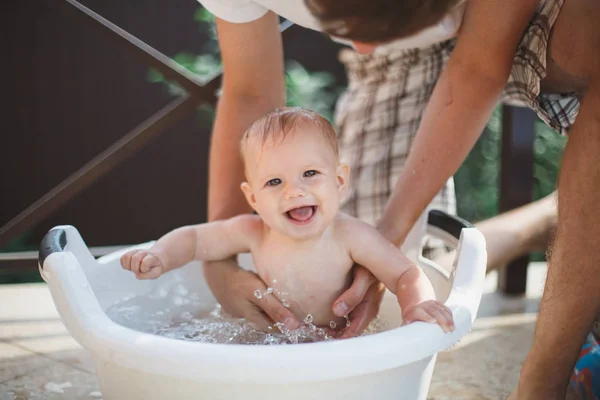Congratulations on a successful child delivery! After carrying a baby in your tummy for nine months and going through the pains of labor, your little bundle of joy is out in the world. The hardest part is over. Or maybe not. But rest assured, every difficulty you go through from here on will be worth it. After all, you’re well on your way to the fulfilling journey called motherhood.
Part of that journey is learning how to bathe your newborn. And for that, you need all the help you can get. Well, you’ve come to the right place. Here, we will discuss bathing a newborn like an expert. After reading this guide, no one will know you’ve never bathed a newborn before.
Newborn Hygiene 101
As a rule of thumb, you must wait at least 24 hours after birth before giving your newborn their first bath. You may even extend that period to 48 hours.
There are a couple of reasons for that. The first is the risk of hypothermia. After living in your warm, cozy womb for nine months, the outside world might feel cold to your newborn. So, give them ample time to properly regulate their body temperature.
The second reason relates to the coat of vernix on your baby’s skin. While it might not look particularly pleasing, it has practical benefits to a newborn. It protects their delicate skin from dry air. It also has antibacterial properties.
If possible, do not try to wash off the vernix. The ideal scenario is to let it shed naturally. That means you must start with gentle sponge baths in the first couple of weeks. A bath would be perfect only after the vernix and umbilical cord stump have fallen off.
For sponge baths, you will need the following:
- Bucket or bowl of water
- Gentle baby wash
- Soft washcloth
- Dry towel
While sponge-bathing your newborn, hold the baby in a warm towel. Only expose the parts you need to wipe. This way, you don’t risk them feeling cold.
Also, be mindful of hard-to-see areas, including the underarm, the genital area, behind the ears, and between the little rolls of flesh on the baby’s legs and neck.
Lastly, be gentle.
How to Bathe a Newborn
Your newborn does not need daily baths. Three baths a week will suffice. Anything more than that can dry out your baby’s skin, which is prone to irritation.
Instead of baths, follow a basic daily hygiene routine. That should include thorough cleaning of your baby’s bottom before changing diapers.
On no-bath days, you may freshen up your baby using micellar water. Zero in on important areas such as the face, hands, neck, feet, armpits, and the back of the baby’s knees. Those need more attention compared to the tummy, arms, and legs.
Here’s what you need to do on bath days.
1. Gather supplies
Once you start bathing your newborn, you want everything to be ready. Avoid leaving your newborn unattended because you found out you had missed a tool in your baby-bathing arsenal. Make sure you have the following items exactly where you need them.
- A baby bathtub
- An ultra-soft washcloth
- A soft towel
- Gentle shampoo
- Gentle cleansing gel
- A clean diaper
- A set of clothes
2. Fill the baby bathtub with water
Don’t overdo it. A maximum of three inches of water will do. As for temperature, keep it between 90° F and 100° F or as close to the normal human body temperature, which is 98.6°. To be sure, use a thermometer.
3. Gently place your newborn in the bath
With one hand, support the back of your baby’s head. With your other hand, cradle their bottom. Let their toes dip into the water first to ease them into the process. Pay close attention to how they respond to the water. If they look uncomfortable, get the whole thing done quickly.
4. Lather and rinse carefully
You can use either a washcloth or your hand to lather and rinse your newborn. If you opt for the latter, make sure you’re not wearing any jewelry.
Start with the head and the face, while the tub water’s not yet too soapy. Once those parts are out of the way, move on to the baby’s torso and extremities.
5. Pat your baby dry
Don’t rub. Once your baby is dry, dress them in something warm and comfy. At this point, watch out for signs of skin irritation.
Wrapping Up
Motherhood requires the utmost care. That’s most true for new moms dealing with fragile babies. But that does not mean you need to lose sleep over the details of child-rearing. Breathe in, breathe out, and believe you can do an excellent job. Focus on the task at hand.
For instance, when it comes to bathing your newborn, once you have everything you need and you know what you must do, there’s not much else to worry about.
Also, remember that it’s not just your baby that requires taking care of. You, too, need postpartum care. That’s not something you can neglect. Raising a healthy baby entails a healthy mom. So make sure you’re sufficiently looked after yourself.








